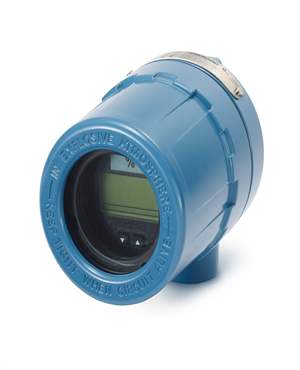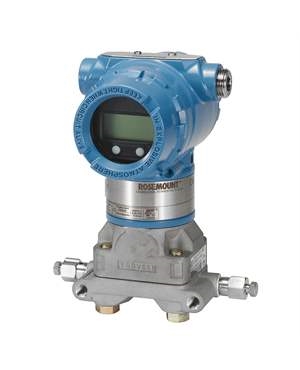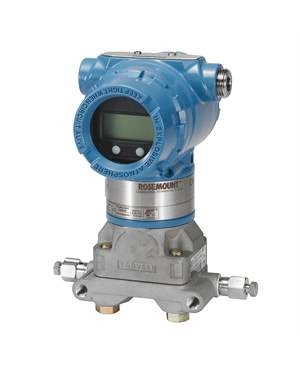A Look at Various Types of Industrial Transmitters – Part II
Brian Craig
April 20, 2018
In the preceding post, we had mentioned that transmitters are divided into three groups – type, signal production, and process instrumentation. We had also provided details of pneumatic and electronic transmitters, and its subtypes. In this post, we shall look at the transmitters, which are utilized for process instrumentation purposes.

Various Types of Process Instrumentation Transmitters
In industrial automation, industrial transmitters play a vital role in accurately converting process parameters like temperature, pressure, flow, and level into readable signals. Each transmitter type is engineered for a specific function, and understanding them is crucial for efficient process control. Below, we explore some of the most widely used different types of transmitters
- Flow Transmitter: As the name suggests, these transmitters provide measurements on the flow of liquid or fluid. This transmitter type consists of a transmitter and a flow sensor in one product. This allows it to generate an output up to 20mA. Flow transmitters are designed using different technologies, these include ultrasonic flow sensors, differential pressure flow sensors, and velocity flow sensors. These devices are widely used in water treatment plants, food & beverage industry, oil and gas operations.
- Temperature Transmitter Types: The design of temperature transmitters includes a transmitter, and a temperature sensor. The sensor sends a signal to the transmitters, which calculates the temperature, and converts it into an output signal. There are two common types of temperature transmitters:
- Thermocouple Type: A temperature transmitter with a thermocouple sensor is capable of calculating temperature by measuring the electromotive force created by a change in process temperature.
- RTD Type: This temperature transmitter comprises RTD sensors, which change electrical resistance due to the change in process temperature. The relationship between these two aspects is used to calculate the temperature.
- Types of Pressure Transmitter: These transmitters are used to measure pressure in different processes. Pressure transmitters are divided into three types:
- Absolute Transmitter: This transmitter take vacuum pressure as its base, and then measures process pressure.
- Gauge Transmitter: This type measures process pressure with the location’s atmospheric pressure as a base.
- Differential Transmitter: When sensing units are introduced to multiple pressures as inputs, differential transmitters measure the differences between the various pressures.
Choosing the right pressure transmitter depends on process conditions like pressure range, media, and required accuracy. These industrial transmitters are prevalent in:
- Chemical plants
- HVAC systems
- Pharmaceutical manufacturing
- Types of Level Transmitter: These transmitters are designed to measure the level of a liquid of solid within an enclosed space or vessel. There are seven types of level transmitters, which include:
- Point Level: These are designed to provide an output signal when a particular measurement level has been reached. The output signal can be an electrical signal to turn on a switch, or an audible alarm.
- Continuous Level: This transmitter measures level within a particular range. It is also designed to provide updated measurements as the level changes.
- Ultrasonic Level Transmitter: Ultrasonic level transmitters allow for non-contact level measurements of bulk solids, or viscous liquids.
- Conductive Level: This type is used to measure different types of liquids at point level. Liquids can include water, caustic soda, and hydrochloric acids, and other corrosive fluids.
- Pneumatic Level: These transmitters are ideal for applications that comprise slurry or sludge. They can be used in applications that does not have electricity.
- Capacitance Level: This industrial transmitter type is used to provide continuous measurement of non-conductive liquids that have a high dielectric constant.
- Hydrostatic based: As the name suggests, this transmitter relies on hydrostatic pressure to determine the level of a liquid.
Industrial Sensors vs. Industrial Transmitters
When it comes to process control and industrial automation, choosing between an industrial sensor and an industrial transmitter can make a big impact on performance and accuracy. At The Transmitter Shop, we specialize in high-quality industrial transmitters that are engineered for reliability, precision, and seamless integration into control systems.
Industrial Sensors – Detect & Respond Locally: Industrial sensors are devices that detect physical properties such as pressure, temperature, flow, or level and convert them into an electrical signal. These signals are typically unconditioned and may not be suitable for long-distance transmission.
Know the Common types of sensors:
- RTDs and Thermocouples (for detecting temperature)
- Piezoelectric sensors (for pressure)
- Ultrasonic and capacitive sensors (for level)
These sensors are often used in local control panels or where only basic detection (like on/off or threshold alarms) is required. However, they lack signal conditioning, which is essential in modern industrial environments.
Industrial Transmitters – Accuracy & Long-Distance Signal Integrity
Industrial transmitters, like those offered by The Transmitter Shop, take input from a sensor and convert it into a standardized output signal (e.g., 4-20 mA, HART, Foundation Fieldbus). This ensures accurate, noise-resistant communication to PLCs, SCADA, and DCS systems.
Transmitters are ideal for applications that require precise measurement, real-time control, and remote monitoring, especially in industries like oil & gas, power, water treatment, pharmaceuticals, and manufacturing.
When to Use Sensors vs. Transmitters
- Use industrial sensors when your application requires local control, basic threshold detection, or when integrating with a local panel.
- Use industrial transmitters for centralized monitoring, automated control, and when accuracy and signal integrity over distance are critical.
When it comes to signal production, and process instrumentation, there are a variety of industrial transmitters to choose from. With these two posts, customers will have more knowledge when enquiring about transmitters for their industrial applications.
At The Transmitter Shop, we offer a wide range of industrial transmitters backed by expert support and competitive pricing. Contact us today and find the perfect solution for your application.
Frequently Asked Questions (FAQ):
What is an industrial transmitter?
An industrial transmitter converts physical measurements like temperature, pressure, flow, or level into an electrical signal for control systems. It's vital for real-time monitoring and automation in industries like oil & gas and manufacturing.
What are the functions of an industrial transmitter?
Industrial transmitters are used to convert physical parameters such as pressure, temperature, or flow into standardized electrical signals for monitoring and control. These devices ensure accurate data transmission to process control systems across various industries.
How does an industrial transmitter work?
An industrial transmitter senses a physical variable using a sensor and then converts it into a measurable electrical signal. Different types of transmitters are designed for specific applications, ensuring precise and reliable data communication in industrial environments.
What is the standard output for an industrial transmitter?
The standard output for most industrial transmitters is a 4-20 mA current signal, which is widely used due to its resistance to electrical noise and ability to travel long distances without signal loss.
Related Posts
- What are the Steps Involved in Calibrating Pressure Gauge?
- All Important Questions on Reconditioned Transmitters Answered
- Is Remanufactured Transmitter a Better Option than a New One?
- Differential Pressure Transmitters: How Do They Help in Flow Measurements?
- 3 Whats that Explain How Often You Should Calibrate Pressure Transducer
- Guidelines for Troubleshooting Pressure Transducers
- Learn How to Calibrate a Pressure Transmitter – II
- Learn How to Calibrate a Pressure Transmitter
- Know Three Interesting Uses of Pressure Transmitters
- Things to Check before Buying a New Pressure Transmitter
- A Look at Various Types of Industrial Transmitters – Part II
- A Look at Various Types of Industrial Transmitters Part I
- All Questions on Smart Transmitters and their Calibration Answered
- 3 Major Pressure Transmitter Technologies That Made the Device Popular
- An Unconventional Guide to Selecting the Right Pressure Sensor
- Factors To Be Considered While Differentiating $40 and $400 Pressure Transmitters
- Tips to Augment the Performance and Service Life of Pressure Transmitter
- Factors of Consideration When Choosing Pressure Transmitters
- 5 Most Popular Pressure Transmitter Technologies
- Tips to Improve the Performance of Pressure Sensors
- Factors to Consider When Choosing a Pressure Transmitter Manifold
- Safety Tips for Differential Pressure Transmitter Operation
- Impact of Shock and Vibration on Pressure Transducer
- Rosemount 3051S vs 3051C Transmitter – What is Your Choice?
- Rosemount 2088 Vs Rosemount 3051 – A Few Points of Differences Discussed
- Difference in Conventional Transmitters and Smart Transmitters
- How to Choose Diaphragm Seals for Your Application?
- How to Select Pressure Transmitter for Your Application?
- Remote Seals: Significance, Working Principle & Applications
- How Do You Calibrate A Flow Transmitter?
- What is Absolute Pressure Transmitter & how does it work?
- HART Communication Protocol: Overview, Working Principle, Benefits in Industrial Automation
- Absolute and Gauge Pressure Transmitters - Overview and Working Principle
- Flow Meter vs Flow Transmitter: Know the Difference
- How Do You Test for 4 to 20mA Signal in a Pressure Transmitter?
- Multivariable Transmitter: What Is It and How Does It Work?
- Pressure Transmitters vs. Pressure Transducers: Learn the Differential Characteristics
- Procedure to Calculate Accuracy of Pressure Transmitter Discussed
- Testing Pressure Gauges: Processes of Verification Test and Functional Test
- An Ultimate Selection Guide for Flow Transmitters
- The Benefits and Challenges of HVAC System Balancing
- Fluid Flow Isolation Techniques for Pressure Instrumentation
- Understanding Pressure Ranges and Units for Fluid System Monitoring
- Understanding the Impact of Pressure Fluctuations on Drying Performance
- Monitoring and Controlling Energy Production in Power Plants
- Common Challenges in Air Flow Measurement and How to Overcome Them
- Pressure Monitoring in Pump Systems: A Comprehensive Guide
- Exploring Density and Viscosity Measurement in Industrial Processes
- Pneumatic Pressure Controllers: A Safe Choice for Hazardous Areas
- A Practical Guide to Vacuum Measurement and Operation
- Complete Hydrogen Gas Safety and Measurement Solutions
- Steam Boiler Drum Level Measurement A Comparison of Control System Technologies
- Furnace Flame Sensor Faults Everything You Need to Know for Safe Operation
- Comparison between Multi Valve Manifolds Block Valves and Bleed Valves
- Pneumatic Pressure Controllers: A Safe Choice for Hazardous Areas
- Furnace Flame Sensor Faults Everything You Need to Know for Safe Operation
- Pneumatic Pressure Controllers: A Safe Choice for Hazardous Areas
- How Can Greenhouse Gas Emissions Be Reduced?
- A Practical Guide to Vacuum Measurement and Operation
- Understanding Electrochemical Detection: Principles, Techniques and Environmental Application
QUICK ENQUIRY







